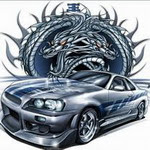 2009 SONATA: TRANSFORMED FROM THE INSIDE OUT FOR A MORE PREMIUM AND FUEL-EFFICIENT MID-SIZE SEDAN EXPERIENCE
2009 SONATA: TRANSFORMED FROM THE INSIDE OUT FOR A MORE PREMIUM AND FUEL-EFFICIENT MID-SIZE SEDAN EXPERIENCECHICAGO, February 6, 2008 - As gas prices and competition in the mid-size sedan segment surge, Hyundai is introducing its refreshed Sonata at the 2008 Chicago Auto Show today. The 2009 Sonata features an all-new interior, enhanced suspensions and revised powertrains boasting both improved fuel economy and horsepower. The 2009 Sonata will be available at Hyundai dealers later this month.
The Sonata combines refined design, proven dependability, spirited performance and an extensive list of standard features to increase its appeal to a broader range of customers. For 2009, Sonata raises the bar for value and standard safety technology in the mid-size segment. Hyundai's sales leader boasts new features ranging from standard USB/iPod auxiliary inputs to available navigation and sport-tuned suspension. Combined with Sonata's continued leadership in safety - it remains the only mid-size sedan under $20,000 with standard Electronic Stability Control (ESC) - the 2009 American-made Sonata is the smartest choice in the competitive mid-size sedan segment.
CHOICE OF TWO MORE POWERFUL AND FUEL-EFFICIENT POWERTRAINS
The 2009 Sonata debuts Hyundai's second-generation Theta four-cylinder engine. The Theta II 2.4-liter DOHC inline four-cylinder engine delivers more horsepower and quicker acceleration, while also improving fuel economy. In fact, the Sonata I4 is now more fuel-efficient than both Camry and Accord four-cylinder engines, delivering an impressive 22 mpg city/32 mpg highway fuel economy rating with the standard five-speed manual transmission or the newly available five-speed automatic transmission with SHIFTRONIC®. The Theta II is rated at 175 horsepower and 168 lb.-ft. of torque. This high-tech, all-aluminum, 16-valve engine now features Continuously Variable Valve Timing (CVVT) on both camshafts and a Variable Induction System (VIS) for better engine breathing. A version of this engine also meets Partial Zero Emission Vehicle (PZEV) standards.
Sonata's 3.3-liter V6 engine has also been improved for more performance and efficiency. It now pumps out 15 more horsepower and three more pound-feet of torque (249 horsepower @ 6,000 rpm and 229 lb.-ft. of torque at 4,500 rpm). The first member of Hyundai's "Lambda" V6 engine family, this newly refined powerplant features all-aluminum construction, dual overhead camshafts, four valves per cylinder, CVVT on both camshafts and stiffer hydraulic engine mounts for optimum power, efficiency and refinement. A variable intake system is added for 2009, which further broadens its power curve, improving off-the-line acceleration and passing performance. New mileage figures for V6-powered Sonatas are 19 mpg city/29 mpg highway, which represents unsurpassed V6 fuel economy in the mid-size sedan segment.
All V6-powered Sonatas use Hyundai's five-speed SHIFTRONIC automatic transmission, which features an overdrive lock-up torque converter for improved highway fuel economy. Neither Accord nor Camry offer manual-mode operation as standard equipment. The automatic transmission has a new reducing valve and solenoid valve for smoother shift quality while the manual transmission has been refined for more precise shifts.
UNSURPASSED ACTIVE AND PASSIVE SAFETY
On the safety side, 2009 Sonata's front collision performance has been further improved by tweaking the design of the engine subframe. The Hyundai Sonata is expected to earn the U.S. National Highway Traffic Safety Administration's (NHTSA) top five-star crash test rating for front and side impacts. This accomplishment was made possible by Sonata's strong body structure and advanced airbag technology. Sonata delivers an unsurpassed commitment to both active and passive safety technology. Every Sonata has lifesaving ESC as standard equipment. This is important because NHTSA has reported that ESC results in 35 percent fewer single-vehicle crashes and 30 percent fewer single-vehicle fatalities in passenger cars. _The Sonata also features a state-of-the-art braking technology package. The package includes four-wheel disc brakes and an Anti-Lock Braking System (ABS) that includes Brake Assist, which provides maximum braking force when a panic stop is detected, and Electronic Brake-force Distribution (EBD) to automatically adjust the braking force to front and rear axles based on the vehicle loading conditions. _In the event that a crash is unavoidable, the Sonata features six airbags--including dual front, front seat-mounted side-impact, and front and rear side curtain airbags--along with active front-seat head restraints. Other passive safety features include shingle-style rear-seat head restraints for improved visibility, three-point seatbelts for all seating positions, front-seat seatbelt pretensioners and force limiters, and a rear-seat Lower Anchors and Tethers for Children (LATCH) system for child seats.








No comments:
Post a Comment